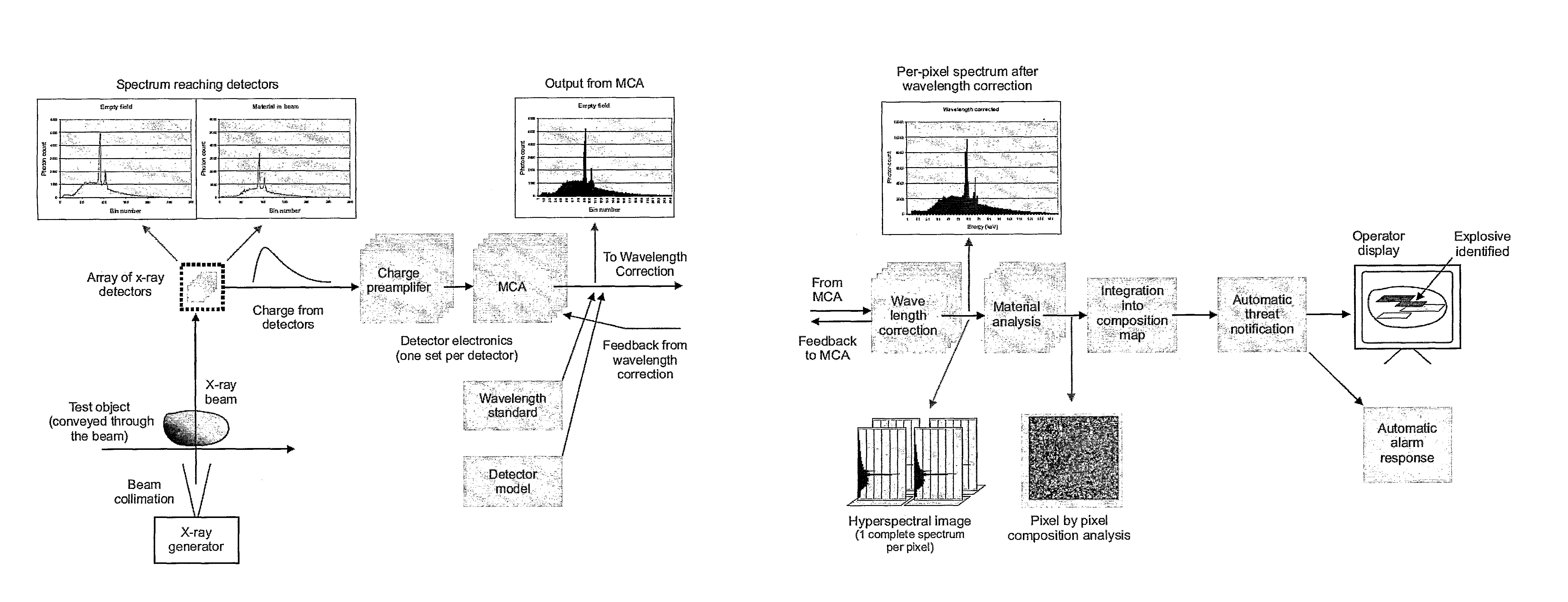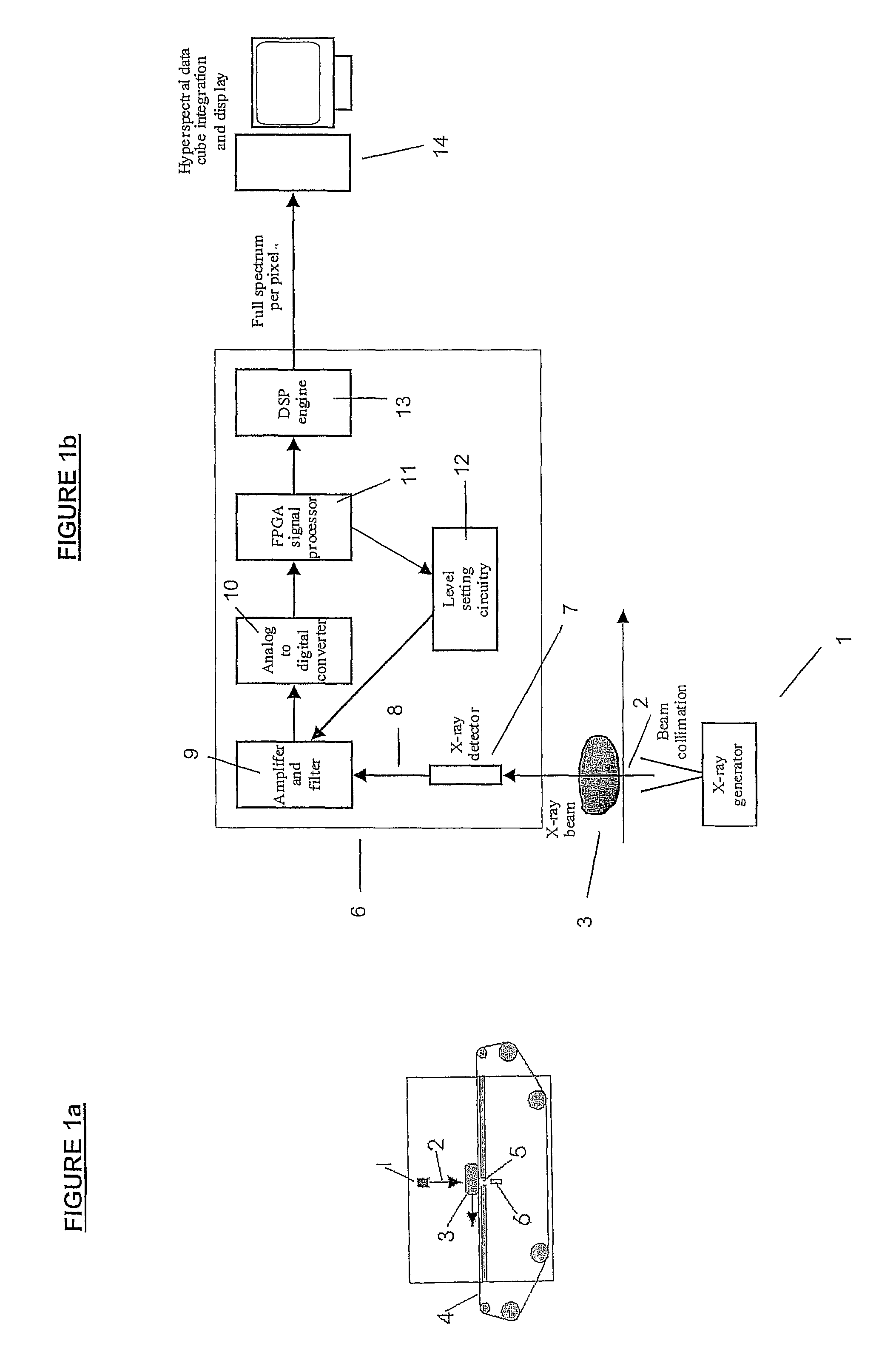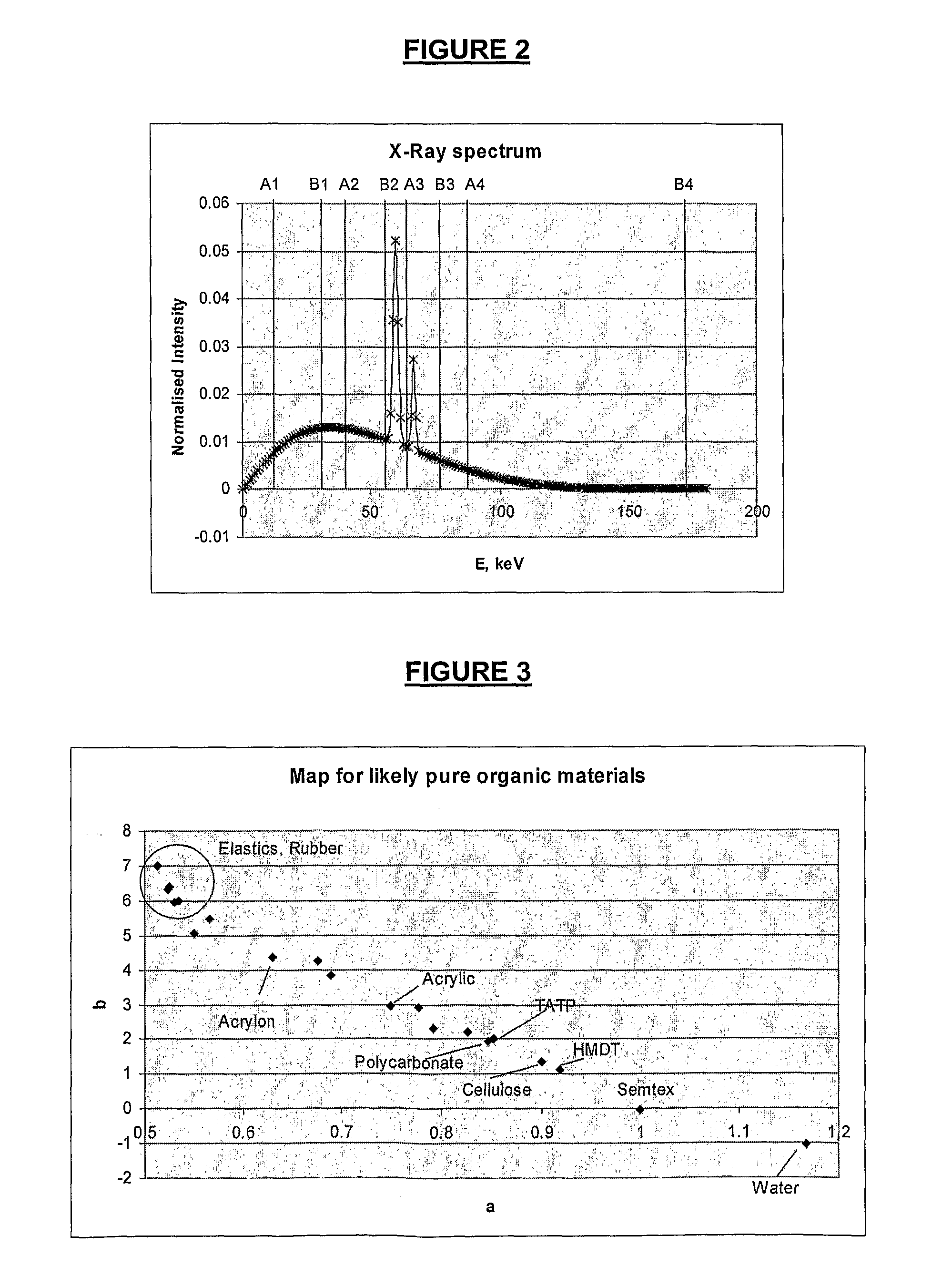Target composition determination method and apparatus
a composition determination and target technology, applied in the direction of material analysis using wave/particle radiation, instruments, applications, etc., can solve the problems of slow physical search, invasive process, limited information provided by x-ray absorption systems, etc., to achieve rapid and accurate assessment
- Summary
- Abstract
- Description
- Claims
- Application Information
AI Technical Summary
Benefits of technology
Problems solved by technology
Method used
Image
Examples
Embodiment Construction
[0143]FIGS. 1a and 1b show block schematic diagrams of component elements used to implement a target composition detection apparatus in accordance with one embodiment.
[0144]The apparatus shown includes an x-ray emission element (1) which is configured to transmit a stream of x-rays (2) with a plurality of different energy levels at a target (3). The target (3) is supported by a conveyor system (4) used to convey a stream or flow of targets through the apparatus over time. The apparatus shown is configured to operate and scan targets in real time and preferably may be used in a security scanning application.
[0145]The x-rays (2) transmitted from the emission element (1) are at least partially absorbed or scattered by the target but some x-ray flux makes it through the target, on to a colliminator (5) and then subsequently to an x-ray detection and processing element (6). These two elements are shown in further detail with respect to FIG. 1b.
[0146]FIG. 1b shows an x-ray detection elem...
PUM
| Property | Measurement | Unit |
|---|---|---|
| composition | aaaaa | aaaaa |
| energy | aaaaa | aaaaa |
| energy levels | aaaaa | aaaaa |
Abstract
Description
Claims
Application Information
 Login to View More
Login to View More - R&D
- Intellectual Property
- Life Sciences
- Materials
- Tech Scout
- Unparalleled Data Quality
- Higher Quality Content
- 60% Fewer Hallucinations
Browse by: Latest US Patents, China's latest patents, Technical Efficacy Thesaurus, Application Domain, Technology Topic, Popular Technical Reports.
© 2025 PatSnap. All rights reserved.Legal|Privacy policy|Modern Slavery Act Transparency Statement|Sitemap|About US| Contact US: help@patsnap.com



